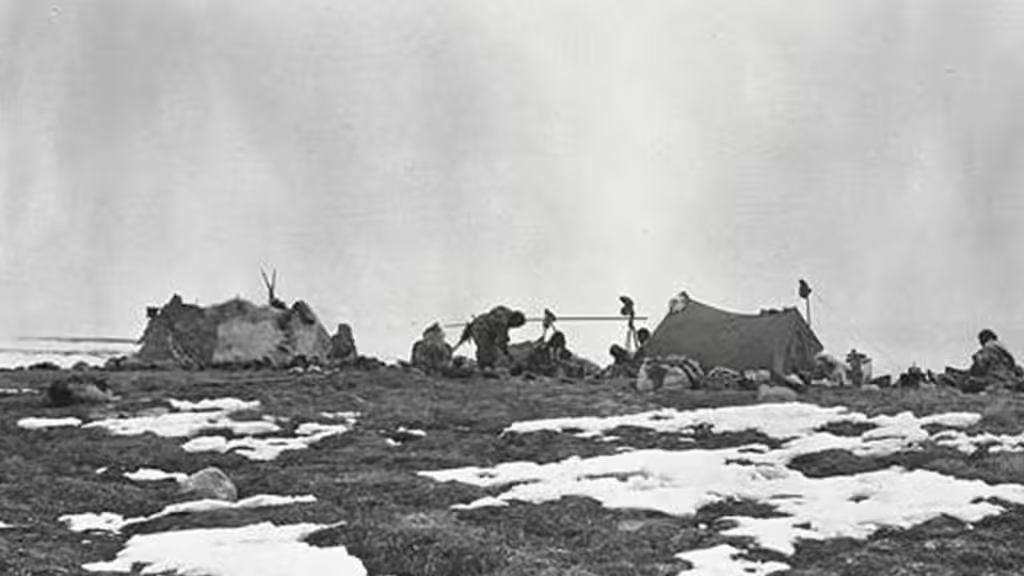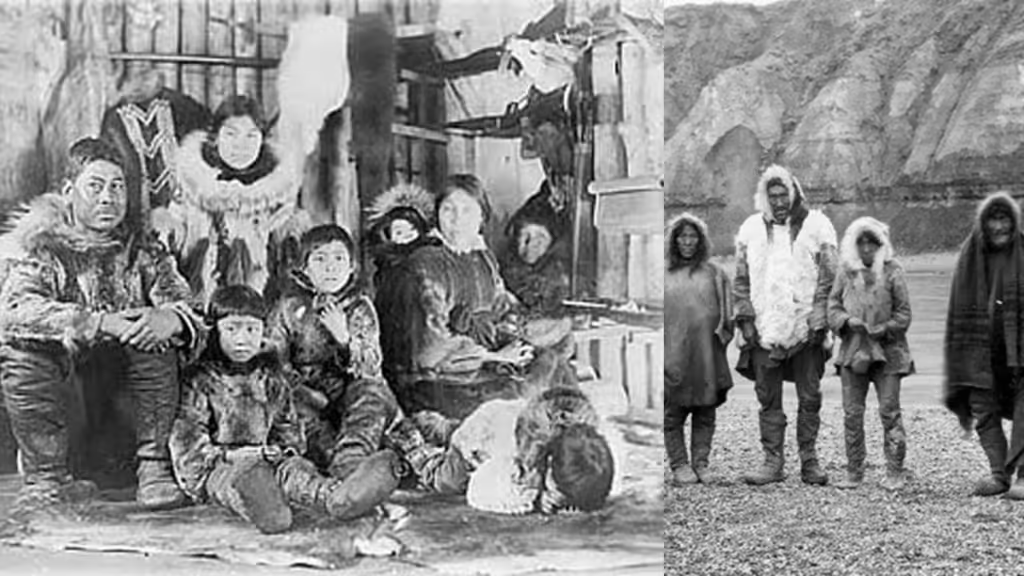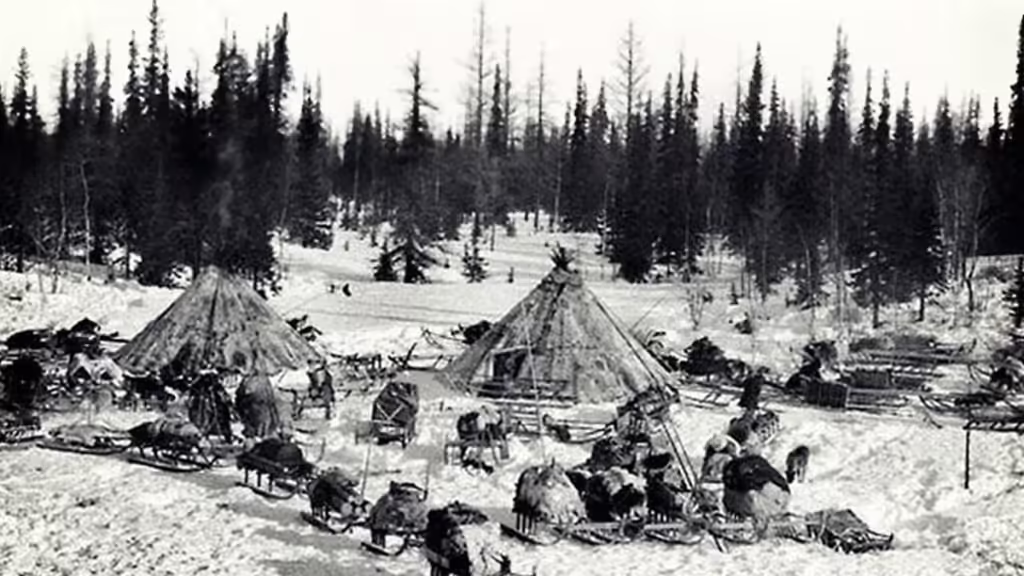In 1930, an entire Inuit village vanished in Canada, leaving behind a chilling mystery that continues to perplex historians and researchers today. This intriguing case of the Inuit village disappearance has sparked countless theories and investigations but remains unsolved, highlighting the complexities of Arctic life and the profound impact of environmental changes.
Table of Contents
1. The Context of the Inuit village disappearance
Nestled in the remote regions of Canada, the village in question was part of a larger Inuit community known for its rich culture and deep connection to the land. The Inuit people have thrived in the Arctic for thousands of years, adapting to one of the harshest environments on Earth. Their culture is deeply intertwined with the natural world, relying on hunting, fishing, and gathering for sustenance.

However, the early 20th century brought significant changes, including the encroachment of colonization, climate fluctuations, and shifts in wildlife patterns that dramatically affected traditional ways of life. During this period, Indigenous communities were often marginalized, and their rights to land and resources were increasingly disregarded. The Inuit village that vanished in 1930 was not just a collection of homes but a reflection of a rich heritage, threatened by external forces that sought to reshape their existence. Understanding this context is vital to grasp the gravity of the Inuit village disappearance.
2. The Events Leading Up to the Disappearance
The Inuit village disappearance can be traced back to a series of unusual events. Reports indicate that the community had begun to experience challenges such as dwindling resources and harsh weather conditions. In the years leading up to 1930, Inuit families began to move away from their traditional hunting grounds in search of better living conditions. The once-abundant wildlife that sustained them was becoming scarce, and the unpredictable Arctic climate made survival increasingly difficult.
Despite these challenges, the sudden disappearance of an entire village raised eyebrows. By 1930, explorers and researchers, including government officials, arrived in the area, hoping to document the Inuit way of life. To their shock, they discovered the village abandoned, with no sign of struggle or distress. Homes stood intact, food supplies remained untouched, and personal belongings were left behind. This eerie scene only deepened the mystery of the vanished village, prompting questions about what could have led an entire community to leave so abruptly.
3. Theories and Speculations
Several theories have emerged over the years to explain the Inuit village disappearance. Some believe that the community may have relocated to seek better opportunities, possibly to escape the harsh conditions or in response to changing animal migration patterns. Inuit traditions emphasized adaptability and resilience, and it is plausible that the village’s inhabitants sought to find a more sustainable environment for their families.

Others speculate that the village might have fallen victim to a catastrophic event, such as an avalanche or extreme weather that forced the inhabitants to flee quickly. The Arctic is known for its unpredictable and severe weather, which can change rapidly, leading to dangerous situations. If a sudden disaster occurred, it may have left the villagers with little time to prepare or gather their belongings.
Another line of thought suggests that the disappearance could be tied to the impact of colonial policies on Indigenous populations. As outsiders exerted more control over land and resources, many Inuit were displaced or forced to adapt to unfamiliar ways of life. This colonization led to a breakdown of traditional structures, leaving communities vulnerable to disintegration. The notion that the vanished village may have succumbed to these external pressures adds a layer of complexity to the mystery.
4. Ongoing Research and Investigations
Despite the passage of time, the mystery of the Inuit village disappearance remains a subject of fascination and investigation. Archaeologists and historians continue to study the region, hoping to uncover clues that might shed light on what happened to the community. Modern technology, such as satellite imagery and ground-penetrating radar, is being employed to search for any signs of habitation or clues about the residents’ fate. These tools provide researchers with new ways to analyze the landscape and identify previously hidden artifacts.
Additionally, collaboration with Indigenous communities plays a crucial role in ongoing research. Engaging with Inuit elders and knowledge keepers can offer invaluable insights into historical practices and cultural narratives, enriching our understanding of the past. As new findings emerge, they contribute to the ongoing dialogue about the Inuit village disappearance, allowing for a more comprehensive view of the events that led to the village’s fate.
In recent years, the vanished village has garnered interest not just from historians but also from the general public, sparking various documentaries and articles. These narratives aim to keep the memory of the village alive, highlighting the importance of preserving Indigenous histories.
5. The Legacy of the Inuit Village Disappearance
The disappearance of this Inuit village is more than just a historical enigma; it serves as a poignant reminder of the challenges faced by Indigenous communities in Canada. The impact of climate change, loss of traditional knowledge, and the effects of colonization continue to resonate today. The legacy of the vanished village compels us to reflect on the struggles and resilience of the Inuit people, as well as the need for greater recognition and support for their rights and traditions.

By studying these past events, we can gain a deeper understanding of the complexities of Indigenous histories and the importance of cultural preservation. As researchers continue to uncover the mysteries surrounding the Inuit village disappearance, it is essential to honor the stories of those who lived in these communities and ensure that their legacies are not forgotten.
Conclusion
The Inuit village disappearance of 1930 remains an unresolved mystery that invites speculation and inquiry. The vanished village serves as a testament to the enduring spirit of the Inuit people and the profound connections they maintain with their land and heritage. As research continues, it is essential to remember and respect the stories of those who lived in these communities, ensuring that their legacies are not forgotten.
By exploring the complexities of this disappearance, we can contribute to a broader dialogue about Indigenous rights, environmental stewardship, and the importance of cultural preservation. Understanding the factors that led to this tragic event can foster a deeper appreciation for the Inuit culture and the ongoing challenges faced by Indigenous peoples in Canada today. The mystery of the Inuit village disappearance continues to inspire new generations of researchers, storytellers, and advocates, ensuring that the vanished village will not fade into obscurity.